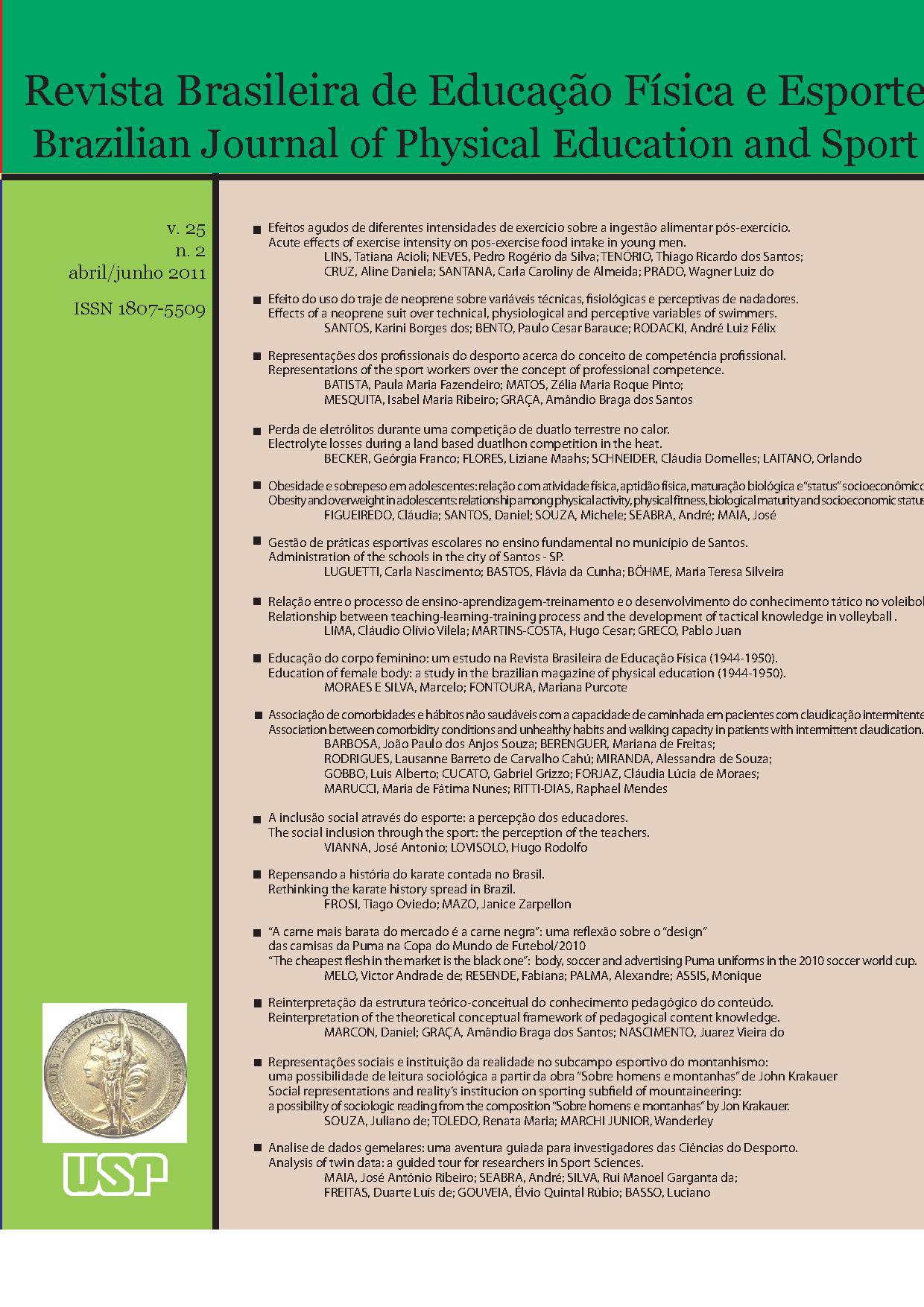Effects of a neoprene suit over technical, physiological and perceptive variables of swimmers
DOI:
https://doi.org/10.1590/S1807-55092011000200002Keywords:
Special swimming suits, Swimming, PerformanceAbstract
In open water swimming competitions, athletes are prone to environmental conditions and are frequently exposed to low temperatures, in contrast to what occurs in indoor competitions. In some circumstances the use of special swimming suits is allowed to avoid hypothermia. The aim of this study was to verify the effects of the use of a neoprene swimming suit in comparison to a conventional swimming suit on a number of cinematic and psychophysiological variables. Twenty athletes experienced in swimming competitions (12 triathletes and 8 swimmers; 22.0± 6.6 yearsold), whose the performance was 75 ± 7.7% of the National record. Athletes performed two maximal and two submaximal 400m crawl simulated competition with a whole body neoprene swimming suit and with a conventional swimming suit. Mean speed (VM) stroke length (CB), stroke frequency (FB), swimming index (IN), rate of perceived effort (PSE), heart rate, and blood lactate concentration (LAC) were compared between conditions. The time to perform maximal trials with the use of the neoprene swimming suit was 6.4% shorter than when wearing the traditional swimming suit. FB and the psychophysiological variables remained unchanged, while CB increased in response to the use of the neoprene swimming suit. The use of the neoprene swimming suit in submaximal trials provided smaller FB, FC, LAC and PSE and larger CB and IN in comparison to the use of the traditional swimming suit. The results indicated that the neoprene swimming suit increases performance in biomechanical, physiological and perceptive aspects. The VM increase in maximal efforts does not depend exclusively on changes in FB and CB. Possibly, increments of the parameters related to the swimming may have improved the mechanical efficiency of the movement, which may have provided a movement economy that resulted in a better performance.Downloads
Download data is not yet available.
Downloads
Published
2011-06-01
Issue
Section
naodefinida
License
Todo o conteúdo da revista, exceto onde está identificado, está licenciado sob uma Licença Creative Commons (CC-BY)
How to Cite
Santos, K. B. dos, Bento, P. C. B., & Rodacki, A. L. F. (2011). Effects of a neoprene suit over technical, physiological and perceptive variables of swimmers . Brazilian Journal of Physical Education and Sport, 25(2), 189-195. https://doi.org/10.1590/S1807-55092011000200002


